#carbon dioxide
Text
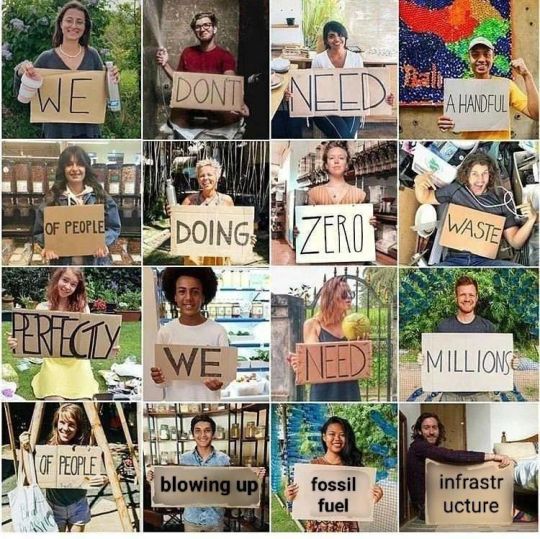
#fossil fuels#infrastructure#global warming#environmentalism#memes#meme#antifascist#co2 emissions#co2#methane#carbon dioxide#jerkmillionaires#jerkbillionaires#jerktrillionaires#eat the rich#eat the fucking rich#ausgov#politas#auspol#tasgov#taspol#australia#neoliberal capitalism#fuck neoliberals#anthony albanese#albanese government#fuck the gop#fuck the police#fuck the supreme court#fuck the patriarchy
6K notes
·
View notes
Text
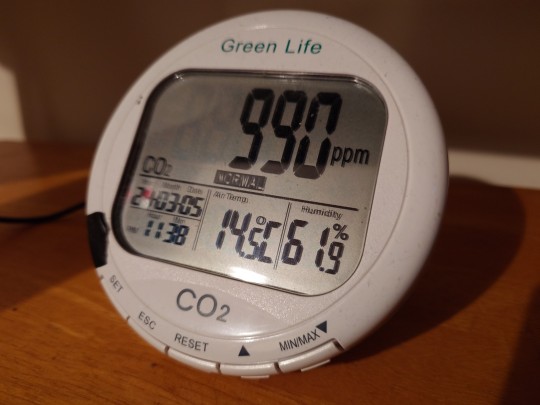
I really like my CO2 meter and I want to tell you about it!
It's a little gadget that measures the amount of carbon dioxide in the air. Did you know your body at rest burns about 100 grams of food/fat an hour? This means you're constantly breathing out carbon dioxide at a rate of about 100 grams an hour. This can rise by quite a lot of you're exercising, and it's less when you're sleeping. This means if you usually keep your doors and windows closed, as I usually do in winter since I live in a cold climate, it can build up fast. You can even breathe directly on the meter and watch the number rise rapidly.
I've had this meter on my desk for many years. It's basically a clock so you can notice the air quality at a glance and it's always on and doesn't produce light. (Note the black tape over the power LED on the left because my autistic ass can NOT sleep with an LED in the room.) It cost about £90 when it was new so it's not the cheapest thing in the world but it's built to last and it's been worth it. This isn't an ad and I'm not saying go for this brand, it's just a gadget that I think improves my life. It's always a good reminder of when I should open the windows.
I'm not 100% sure how well supported this is, but I've seen it said online that a carbon dioxide level of over 1000ppm can lower a person's cognitive function by about 25%. It can be an issue with classrooms with a lot of people. Normal outdoor levels are about 300-400ppm. Whether you believe that is up to you, but I do think fresh air makes people feel better and this serves as a good reminder to let it in. People like to make carbon monoxide jokes on this website, but sometimes high CO2 can be an issue around his you generally feel. It can also build up faster than you'd think if you have multiple people about and no windows open.
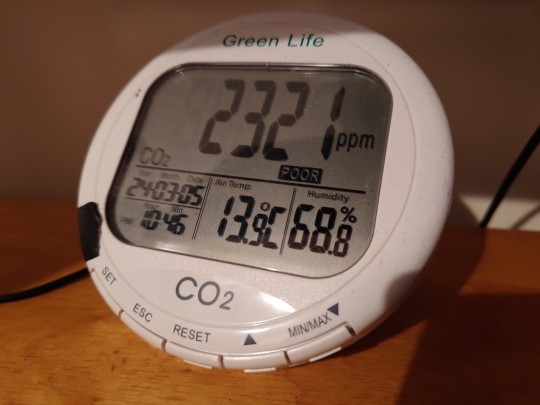
Time to open the window! (Apologies for the photo quality, the reflective LCD is not the easiest thing in the world to photograph without shadows or huge reflections.)
455 notes
·
View notes
Text
#emissions#climate change#hope#good news#global warming#carbon dioxide#climate anxiety#environmental anxiety
501 notes
·
View notes
Text
The new 'compost obligatoire' rules came into force on 1 January 2024. Here's what they entail.
As of 1 January 2024, organic waste recycling is mandatory in France under new 'compost obligatoire' rules.
With support from the government’s Green Fund, municipalities must provide residents with ways to sort bio-waste, which includes food scraps, vegetable peels, expired food and garden waste.
Households and businesses are required to dispose of organic matter either in a dedicated small bin for home collection or at a municipal collection point. Previously, only those who generated over five tonnes of organic waste per year were required to separate it.
The waste will then be turned into biogas or compost to replace chemical fertilisers. Alternatively, it can be composted at home.
The obligation is currently on local authorities to provide an easy means for households to compost or separate organic waste.
While facilities are rolled out, there will not be fines imposed for non-compliance. It is yet to be seen whether stricter rules will be imposed in future.
One-third of household waste is bio-waste
Organic waste from food and gardens accounts for almost one-third of household waste. When it is mixed with other rubbish, it typically ends up in landfills or incinerators, where it produces heat-trapping greenhouse gases like methane and CO2.
Food waste is responsible for about 16 per cent of the total emissions from the EU food system, according to the European Commission. Globally, food loss and waste generates around 8 per cent of all human-caused emissions annually, the UN says.
It can also contaminate packaging destined for recycling like paper, plastic and glass.
In 2018, only 34 per cent of the EU’s total bio-waste was collected, leaving 40 million tonnes of potential soil nutrients to be discarded, according to NGO Zero Waste Europe.
In France, an estimated 82 kg of compostable waste per person is thrown away each year.
Is bio-waste separation mandatory in other European countries?
Under the EU’s Waste Framework Directive, bio-waste collection is being encouraged this year, but it stops short of setting mandatory targets.
In many European countries, organic waste separation has already been implemented at the municipal level.
Milan in Italy has been running a residential food waste collection programme since 2014. Households were given dedicated bins and compostable bags to kick off the scheme.
Elsewhere, taxes or bans on incinerating bio-waste have encouraged similar schemes, with separate bins and home composting widespread in Austria, the Netherlands and Belgium.
The UK announced plans to roll out separate food waste collection in 2023. It remains voluntary for households in England, but is more strictly enforced in Wales and for business owners.
How to sort your bio-waste
Ideally, all waste - including organic matter - should be kept to a minimum.
This can be achieved through careful meal planning. Consuming, freezing or preserving food before it expires along with using every part of an ingredient also help to reduce waste. Some food waste can even be repurposed into animal feed.
Any food waste that cannot be saved or repurposed should be either composted or separated for collection. This includes uneaten food scraps, baked goods, dairy products, eggshells, fruit and vegetables and their peels, mouldy food, pet food, raw and cooked meat and fish, bones, tea and coffee grounds.
Liquids, non-food products and packaging should not be placed in bio-waste bins.
-via EuroNews.Green, January 2, 2024
#france#composting#eu#european union#organic waste#biofuels#recycling#sustainability#food#food waste#compost#carbon dioxide#carbon emissions#sustainable living#good news#hope
175 notes
·
View notes
Photo







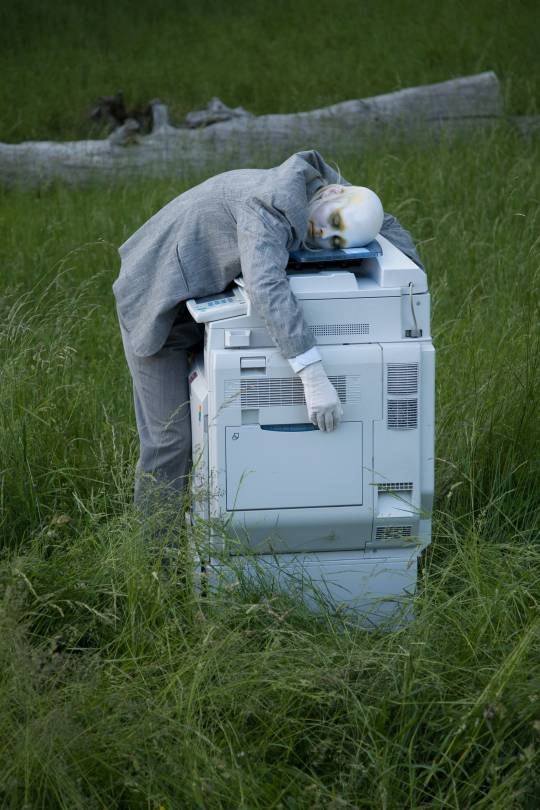


"RADICAL ROMANTICS" (2023)
Fever Ray + Nina Andersson
#fever ray#karin dreijer#olof dreijer#the knife#queer#art#music#album#artwork#cover#photoshoot#era#radical romantics#sebastian gainsborough#seb gainsborough#trent reznor#atticus ross#nine inch nails#carbon dioxide#martin falck#vessel#nidia#nina andersson
1K notes
·
View notes
Text
As shown in figure 13.58, this is an enormous chemical reactor in which heating, reduction and purification occur together.

"Chemistry" 2e - Blackman, A., Bottle, S., Schmid, S., Mocerino, M., Wille, U.
#book quotes#chemistry#nonfiction#textbook#iron ore#chemical reactor#heating#reduction#purification#blast furnace#ore#limestone#coke#exhaust#carbon monoxide#carbon dioxide#nitrogen dioxide#oxygen#slag#molten slag#pig iron
56 notes
·
View notes
Text
#good news#nature#science#environmentalism#environment#climate change#conservation#carbon emissions#carbon dioxide
115 notes
·
View notes
Text
Fun Fact of the Day:
Carbon Dioxide (CO₂) has a polar covalent bond. This means it doesn't share its electrons equally between atoms. So when it is floating in free space..... it wiggles!!

Look at it go!
This type of wiggling allows CO₂ to collect light energy (heat) that O₂ and N₂ cannot absorb! This is how it is classified as a greenhouse gas!
(Extra Fun Fact: Water has similar properties and is also considered a green house gas!)
#science!#carbon dioxide#idk i was feeling science-y today :)#greenhouse gas#this is a simplification of it all so if your interested feel free to find out more!#bread
130 notes
·
View notes
Text
The search is on worldwide to find ways to extract carbon dioxide from the air or from power plant exhaust and then make it into something useful. One of the more promising ideas is to make it into a stable fuel that can replace fossil fuels in some applications. But most such conversion processes have had problems with low carbon efficiency, or they produce fuels that can be hard to handle, toxic, or flammable.
Now, researchers at MIT and Harvard University have developed an efficient process that can convert carbon dioxide into formate, a liquid or solid material that can be used like hydrogen or methanol to power a fuel cell and generate electricity. Potassium or sodium formate, already produced at industrial scales and commonly used as a de-icer for roads and sidewalks, is nontoxic, nonflammable, easy to store and transport, and can remain stable in ordinary steel tanks to be used months, or even years, after its production.
Read more.
#Materials Science#Science#Carbon dioxide capture#Carbon dioxide#Fuels#Chemistry#MIT#Harvard University
42 notes
·
View notes
Text
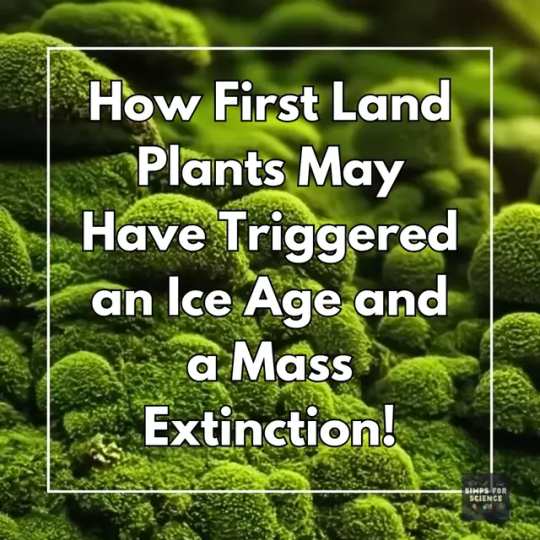


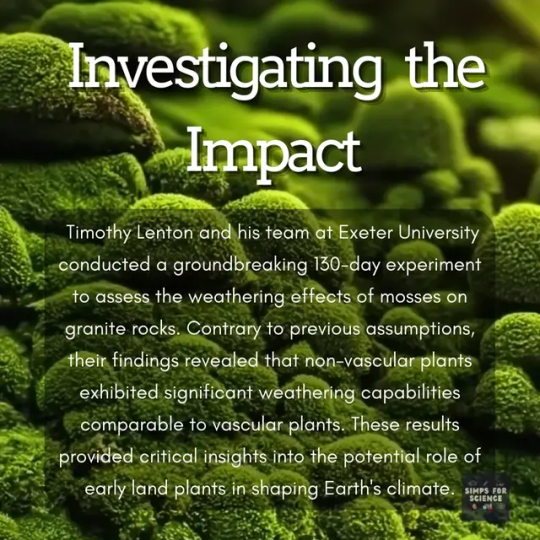
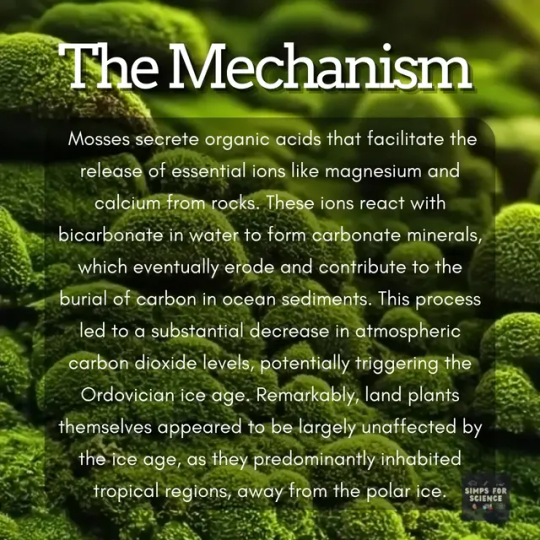

Tiny land pioneers 🌱 might have had a BIG impact on Earth's climate millions of years. Go through this post to learn more!
Image sources:
Background - Craiyon
Land plants - Marilylle Soveran/Flickr
#ordovician#evolution#paleo#paleobiology#paleoblr#paleobotany#botany#plantblr#plants#ice age#mass extinction#paleontology#carbon#carbon dioxide#geology#science#science facts#education#discover#study blog#studyblr#biology#biology student#biology facts#scicomm#explore#research scientist#earth#cool science#simps for science
15 notes
·
View notes
Text
*makes a flamethrower out of a butane can*
"magic"
10 notes
·
View notes
Text

[USA, New York]
100's of bankers are now outside the Citi HQ, locked out of their workplace.
Climate Activists are standing arm-in-arm with our partners, blockading every single door.
Citibank are the top financier of oil and gas in the Amazon and the second largest funders of all fossil fuels.
These bankers are climate criminals. They deserve not a moment of peace.
#usa#america#newyork#new york#new york city#activism#class war#co2 emissions#co2#methane#carbon dioxide#climate change#global warming#climate crisis#climate action#climate emergency#climate#climate and environment#eat the rich#eat the fucking rich#fuck the gop#fuck the police#fuck the supreme court#fuck the patriarchy#antifa#antiauthoritarian#anti capitalism#antinationalist#ausgov#politas
158 notes
·
View notes
Text
CARBON DIOXIDE [LSDXOXO]
FEVER RAY | SINGLE, AUG 2023
#RELEASE RADAR#audio#fever ray#LSDXOXO#electro#synthpop#experimental#remix#mute records#carbon dioxide#electronic#music
19 notes
·
View notes
Note
have you seen this?? https://reasonstobecheerful.world/hempcrete-construction-us-building-code-sustainable/
Thank you for sharing this!
Although hempcrete is used in many other countries, it was banned in the US building code for a long time due to the association between hemp and marijuana.
Now that ban has been lifted, which paves the way for this more sustainable building material to be used widely in the states.
"It requires three times less heat to create than concrete, weighs about one-eighth as much as concrete (leading to fewer transport-related emissions), and actively sequesters CO2 — according to one Cambridge University researcher, hemp absorbs between eight to 15 metric tons of carbon per hectare, significantly more than the two to six metric tons typically captured by forests."
#good news#environment#sustainable building#green building#sustainability#climate change#carbon dioxide#hope#sustainable concrete#green concrete#submission#ask#anonymous#tw marijuana#hemp#carbon emissions#environmental despair#ecoanxiety#global warming
901 notes
·
View notes
Text
The 1987 Montreal Protocol, which phased out the production and use of chemicals that were depleting the ozone layer, has long been considered one of the most successful environmental treaties in history. New research finds that the global pact achieved another unforeseen benefit: delaying the melting of Arctic sea ice.
In a study published Monday in the Proceedings of the National Academy of Sciences, researchers from the University of Exeter and Columbia University found that the implementation of the Montreal Protocol is delaying the first ice-free Arctic summer by up to 15 years. That’s because the chemicals banned under the agreement are also potent greenhouse gases.
“Our results show that the climate benefits from the Montreal Protocol are not in some faraway future: the protocol is delaying the melting of Arctic sea ice at this very moment,” Lorenzo Polvani, one of the study’s authors, said in a press release.
The study authors ran a series of climate models based on two different scenarios: one that included levels of ozone-depleting substances that would be expected if the Montreal Protocol never existed, and another accounting for the global treaty. The researchers concluded that the protocol is postponing the first ice-free Arctic summer by a decade or more, and entirely due to the phasedown of ozone-depleting chemicals.
The Montreal Protocol was created to address a hole in the stratospheric ozone layer over the Antarctic. The ozone layer protects the Earth from harmful ultraviolet radiation that causes skin cancer and cataracts in humans. The treaty phased out almost 100 chemicals — including aerosols used in hair spray and other products, refrigerants, and solvents — that were found to be responsible for destroying stratospheric ozone.
Those banned chemicals, collectively called ozone-depleting substances, or ODS, are also potent greenhouse gases, with up to tens of thousands times the global warming potential of carbon dioxide. The report authors estimate that 1 metric ton of avoided ODS emissions leads to 7,000 square meters (more than 75,000 square feet) of avoided Arctic sea loss. By way of comparison, 1 metric ton of carbon dioxide emissions results in about 3 square meters (about 32 square feet) of sea ice loss.
Given the potency of ODSs as a greenhouse gas, the authors are not surprised at this outsize impact on Arctic sea ice levels. “Nonetheless, such a large mitigating impact of the Montreal Protocol on Arctic sea ice loss is remarkable if one keeps in mind that the protocol was aimed at preventing ozone depletion in the Antarctic stratosphere, and little was known of its effect on Arctic sea ice when the protocol was signed,” the authors noted.
According to their projections, the Montreal Protocol has already prevented more than half a million square kilometers (about 193,000 square miles) of sea ice loss. By 2030, that amount will rise to more than 1 million square kilometers, and to 2 million square kilometers of prevented Arctic sea ice loss by 2040.
-via Grist, 5/24/23
#arctic#arctic circle#arctic ocean#arctic ice#sea ice#climate change#global warming#sea level rise#montreal protocol#cfc#hfc#greenhouse gasses#carbon dioxide#if we hurry#we can absolutely buy ourselves the time to save ourselves#as someone constantly looking at good news developments in the environment and green tech I truly believe that#good news#hope
417 notes
·
View notes
Text
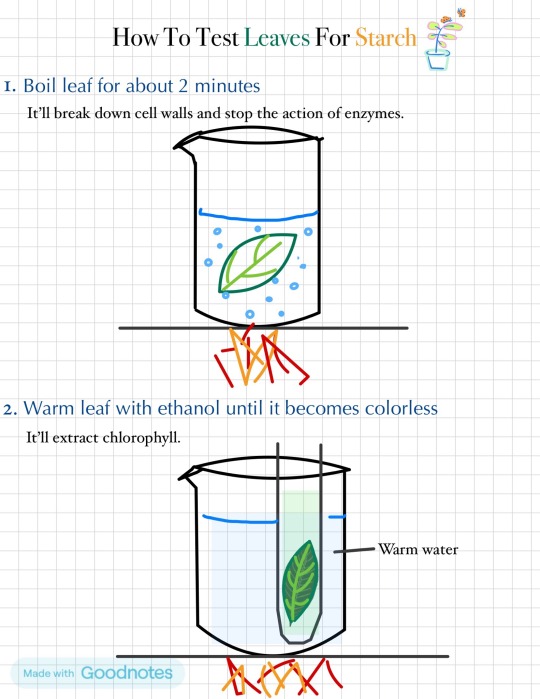
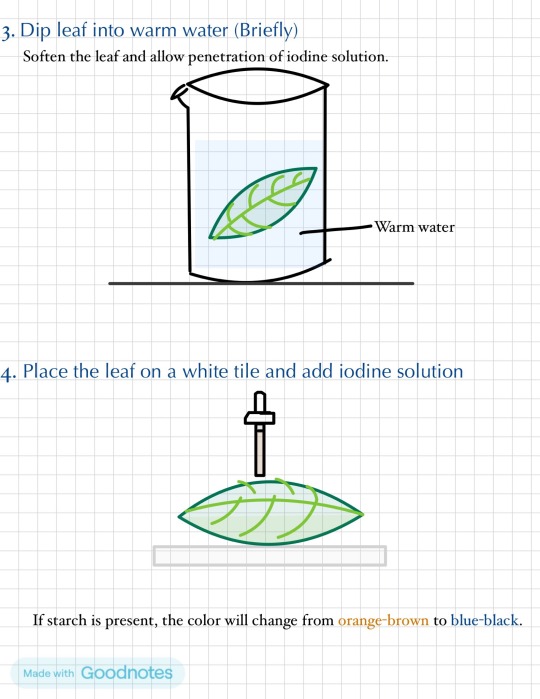


Happy new year!!
*Updated* We turn off the Bunsen burner in step 2
#science#igcse#study notes#biology#study tips#iodine#enzymes#ethanol#science experiments#leaves#carbon dioxide
10 notes
·
View notes